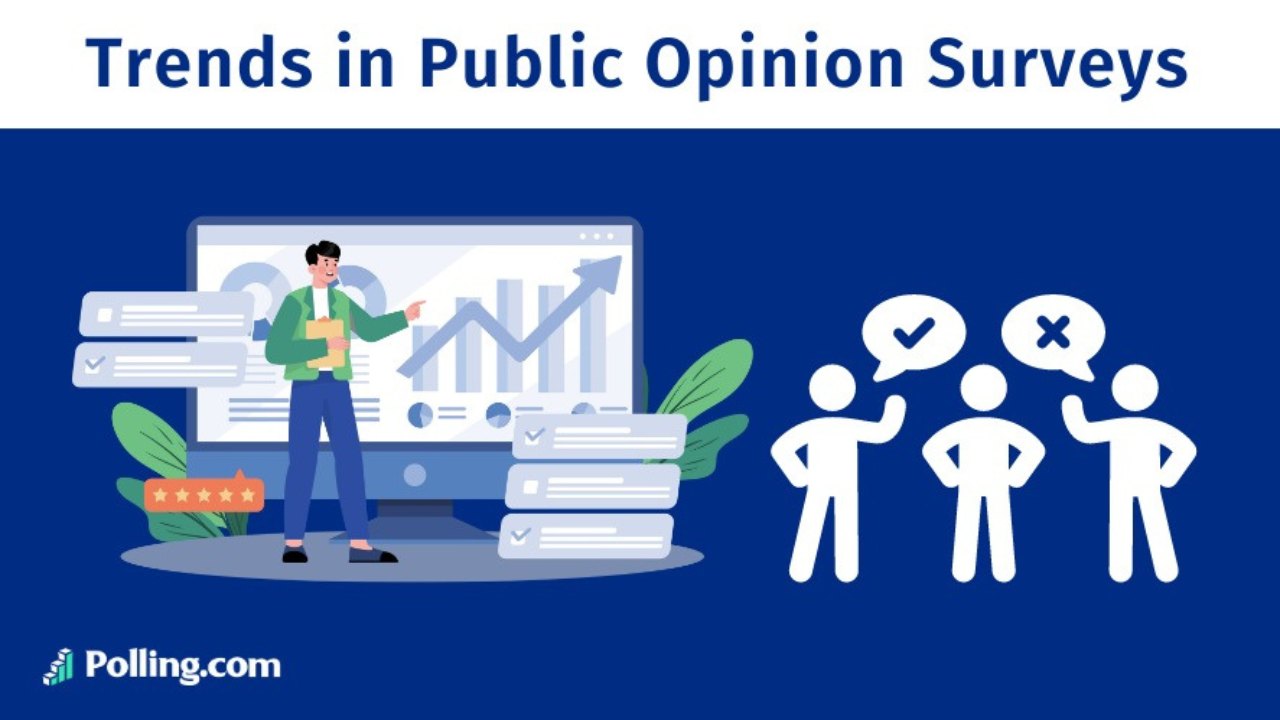
Public Opinion Surveys: Evolving Methods and New Insights
Public opinion surveys are essential tools that ask questions to samples of people to understand what they think about different issues in society, politics, business, and more.
By capturing these ideas, survey conductors or businesses can gauge the sentiments and gain various insights from people to guide business strategies.
As time passed, the methods used to conduct public opinion surveys have evolved significantly to adapt to technological changes and respondent behaviors.
In this article, we will look at the latest trends in public opinion surveys and explore what new insights they bring to light.
The Evolution of Public Opinion Surveys
Opinion polling has been around for a long time but has changed significantly over the years.
Back in the 1800s, polling was pretty simple.
Basic straw polls were taken at local fairs and town halls. Organizers would ask people who they planned to vote for to get a sense of views before elections.
Modern polling started in the 1920s with pioneers like George Gallup and Elmo Roper.
They created questionnaires and sampling methods to measure what consumers thought.
Their purpose was to survey a group that represented the whole population.
No longer later, Gallup correctly predicted who would win the 1936 presidential election using a survey of 3,000 people.
This showed that polling a small but diverse sample could forecast the broader public opinion.
In the early days, polling was done face-to-face, by mail, or over the phone.
Quota sampling ensured they included different types of people, like age, gender, and income. Over time, methods have been improved, such as using statistics to increase the accuracy of the results collected.
By the 1960s, opinion polling was standard in government, media, and business.
As technology advanced, surveys evolved from phones to online and mobile platforms. This enabled faster and more inclusive polling.
However, challenges like low response rates and privacy concerns still continue.
Thus, innovations are still needed to keep surveys helpful in understanding what the public thinks about important issues.
The key is that while polling has changed over the years, it remains essential for capturing the voices of large groups or organizations.
Current Trends in Public Opinion Surveys
As public opinion surveys evolve over time, several key trends shape how data is collected.
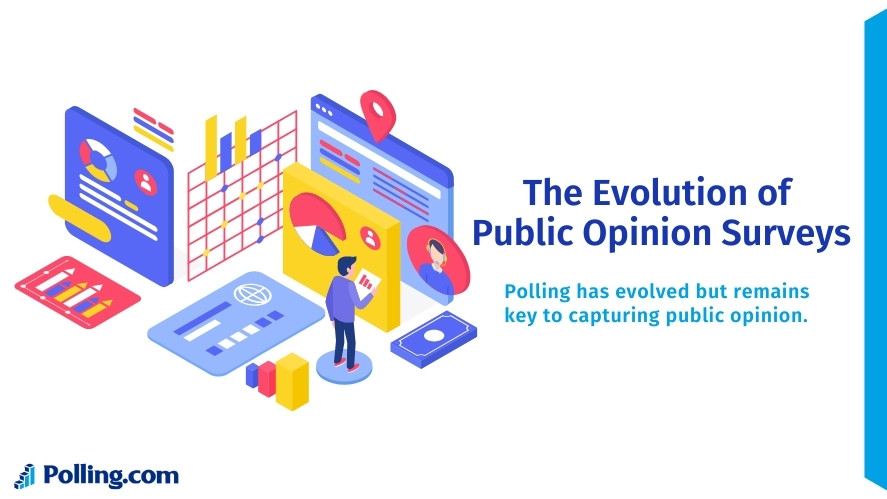
Below are some of the most prominent trends today.
Use of Big Data
Big data includes information from various sources such as social media, website activity logs, maps, and mobile devices.
Large datasets, including details gathered from social media, website activity logs, maps, and mobile devices, are now combined with survey responses.
This helps businesses get more complete perspectives and a much richer view of what’s on people’s minds.
They can spot patterns, trends, or insights that might have been hidden if they only looked at survey responses.
For example, researchers can look at what people say about candidate preferences in surveys and then compare it to their online and social media behavior for deeper insights.
Furthermore, big data also helps choose the right people to participate in surveys.
For example, it provides detailed information about different groups, such as their online behaviors, shopping tendencies, and locations.
Based on this information, survey conductors can select the one they want to include more carefully, resulting in more accurate and meaningful data.
Real-Time Polling
Real-time polling using online and phone surveys is getting very popular nowadays.
It lets researchers instantly see reactions to things happening or about people’s first thoughts after using products/services.
The plus side is learning how views change at the moment. However, the downside is people’s first thoughts may not be as meaningful.
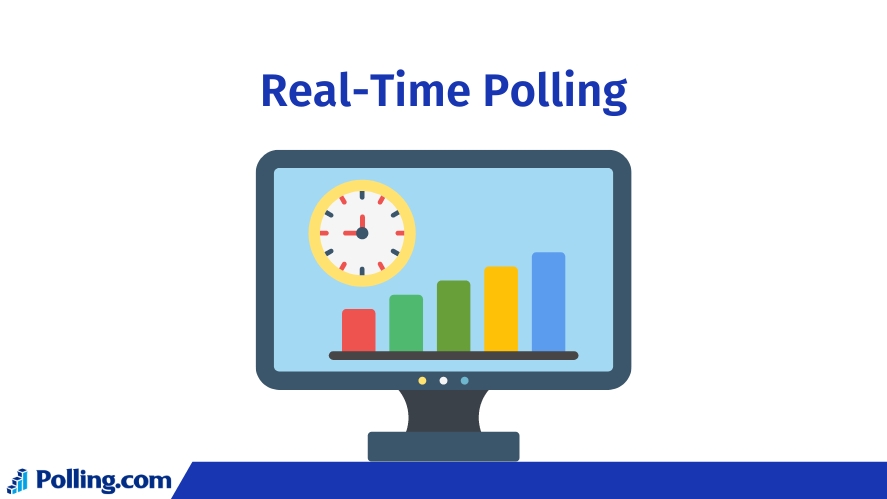
For example, gaming companies can conduct real-time polls during beta tests to instantly gauge player reactions to new features or levels.
This rapid feedback helps developers improve the game while it is still developing.
However, real-time data alone are not always reliable.
They need to be combined with longer surveys later that capture more thoughtful views after using the product more.
Both fast first reactions and more considered views provide insights from different perspectives. So, it’s better to look at these and not rely on just one or the other to get the whole picture.
Increased Focus on Diversity and Inclusion
There is much more work to include all types of people in surveys, not just the majority groups.
Thus, businesses can use tools like census data, social media tracking, and focus groups to find and reach people often left out of surveys.
Some strategies include oversampling, targeted recruiting, and translating surveys to get more participation from minority groups.
It’s like ensuring your survey participants include people of different ages, jobs, and backgrounds, not just those most similar to you.
More survey diversity leads to a picture representing all of the community, not just the dominant segments.
In other words, inclusive polling is critical to understanding what all parts of the population think and provide more representative results.
Methodological Innovations
Surveys have recently seen exciting changes, making them more accurate, efficient, and engaging.
Also, public opinion on artificial intelligence and how do people feel about AI are changing over time as the technology advances and becomes more commonplace.
Here are three key innovations shaping how surveys are done today.
1. Advanced Sampling Techniques
Researchers are using newer sampling methods to get more accurate survey results.
One method is stratified sampling.
This divides people into groups or “strata” first based on age, race, and gender before sampling.
This ensures that all different groups are included in the right proportions.
Cluster sampling is another method that randomly selects whole “clusters” or groups of people, like neighborhoods.
This makes the sampling process easier. These more advanced techniques ensure surveys better represent the whole population, not just certain types of people.
2. AI and Machine Learning
AI and machine learning can analyze large amounts of survey data to find patterns and trends.
For example, some website owners might apply machine learning to analyze customer satisfaction survey results.
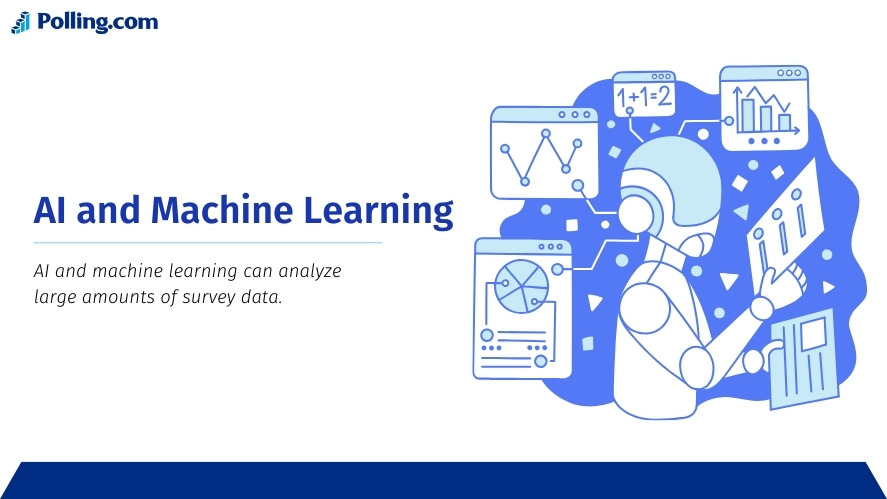
It could be spotted that satisfaction dropped among mobile app users after a recent update. This indicates issues to address.
AI can also assist in grouping similar open-ended written survey responses into groups to quantify and summarize results.
This automation saves time by handling complex analyses that would take humans a long time to do manually.
3. Gamification of Surveys
Gamification means adding game-like parts to surveys to make them more fun and engaging.
For example, a survey might give points or badges as people complete questions, which they can later redeem for prizes.
It can also use humor, competitions, quizzes, or rewards to make the survey feel like a game.
Gamified surveys tend to get higher response rates and better-quality answers since people enjoy them more.
A risk is that adding gamification could bias who chooses to take the survey if not careful.
But overall, it improves participation if designed well. Researchers get more and better data by making surveys entertaining.
Challenges Facing Public Opinion Surveys
Public opinion surveys try to understand people’s thoughts about various topics, like their opinions on products, services, political issues, and social trends.
However, surveys face growing challenges today. Here are some prominent concerns:
Declining Response Rates
It’s becoming more challenging to get people to take surveys. Many don’t answer calls from unknown numbers or just ignore mail surveys.
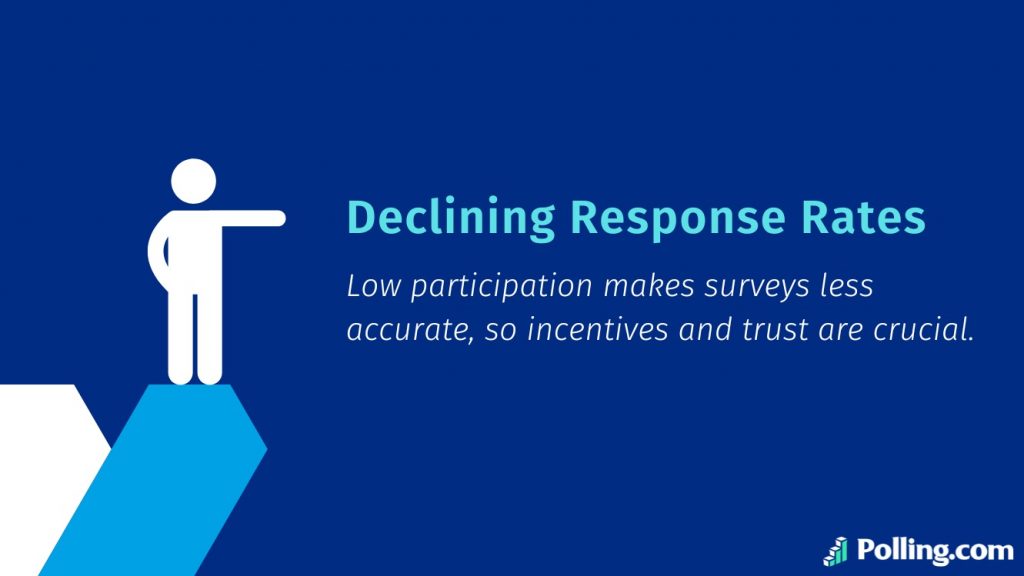
This can mean that survey results don’t reflect all groups accurately.
Thus, it is better to find ways to get more people to participate in the surveys, including offering rewards, keeping surveys short, promising anonymity, and building trust.
Data Privacy Concerns
Another issue is that people worry about privacy with surveys today.
They don’t want their personal information misused. Survey companies use things like data encryption, keeping responses anonymous, and limiting access to protect privacy.
Taking part in surveys is always voluntary and can be stopped anytime.
Clear privacy rules help ease people’s concerns. But worries may stop some from taking surveys.
Political and Social Polarization
There is more political division today. People may hide their real views or give biased answers.
Getting balanced and representative survey samples is challenging but essential.
It is recommended to use neutral, non-leading questions to minimize the impact of polarization.
Ensuring that surveys are conducted to make people feel safe and anonymous can also help them give more honest answers.
Case Studies and Examples
The Chicago Council on Global Affairs has surveyed Americans yearly since 1974. The survey asked people about their views on foreign policy.
The Council has given policymakers tons of helpful information using careful methods over many years.
For example, their 2022 survey found that most Americans support helping Ukraine defend against Russia’s invasion.
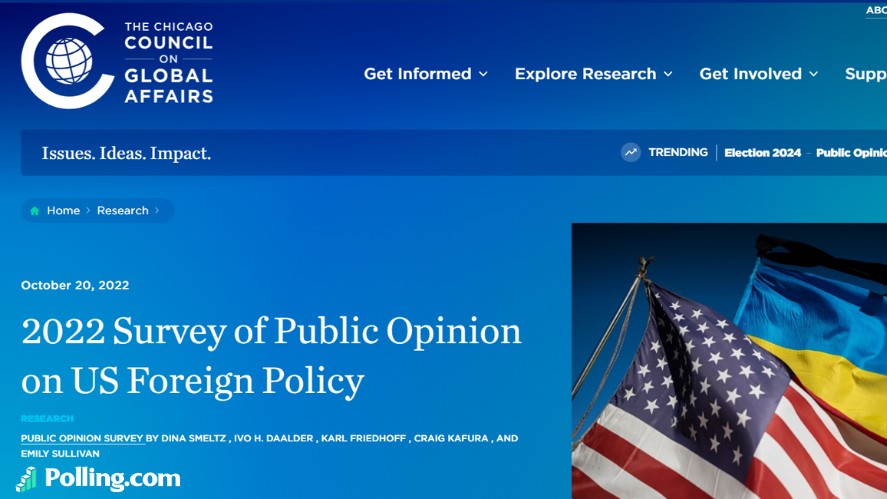
People favor giving Ukraine military help and economic aid. They also support letting Finland and Sweden join NATO.
The Council uses good sampling and online surveys for timely, high-quality results.
Through decades of experience, the Chicago Council shows best practices for surveys.
Good surveys use random sampling to get input from diverse Americans. The questions are crafted clearly.
Also, they allow people to respond anonymously, which helps them share their genuine opinions.
That said, quality surveys capture what the public thinks to guide policies and help guide policies that benefit everyone.
Conclusion
Public opinion surveys have evolved but remain essential for capturing populations’ perspectives.
Looking ahead, we can expect surveys to use more advanced tech and reach even more people. This will make them even better at capturing public opinion and guiding essential decisions.
Public opinion surveys will be a vital tool for understanding what people think and how society changes.
